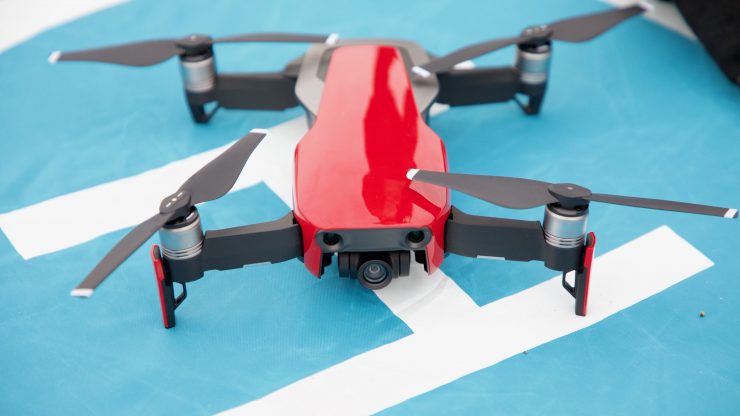
Is the DJI Mavic Air as good as the Mavic Pro? This is a question I wanted to try and answer. As a Mavic Pro owner, I was interested to see if the new Mavic Air could offer the same level of functionality and image quality while saving you a few hundred dollars. Now, this isn’t a review of the Mavic Air, it’s just my personal thoughts on how I found it compared to the Mavic Pro.
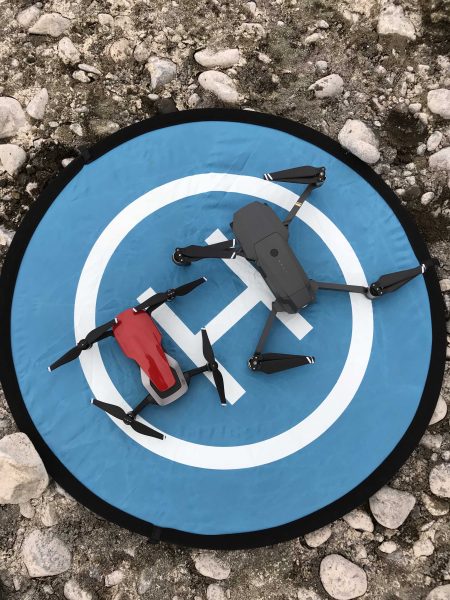
The Mavic Air and the Mavic Pro share the same first name, but just how different are these two siblings? Well, before we get into the image quality and functionality comparisons lets have a look how they stack up on paper.
| Mavic Air | Mavic Pro | |
| Takeoff Weight: | 430g | 734g |
| Dimensions Folded: | 168×83×49 mm (L×W×H) | 198x83x83 mm (L×W×H) |
| 3-axis mechanical gimbal | 3-axis mechanical gimbal | |
| Video Resolutions: | UHD up to 30 fps, recording at 100 Mbps Video Format MP4/MOV (H.264/MPEG-4 AVC) |
UHD up 30fps, recording at 60Mbps Video Format MP4/MOV (H.264/MPEG-4 AVC) |
| Sensor Size: | 1/2.3” CMOS | 1/2.3” CMOS |
| Effective Pixels: | 12 MP | 12.35 MP |
| Lens FOV: | 85° | 78.8° |
| Aperture: | f/2.8 | f/2.2 |
| Shooting Range: | 0.5 m to ∞ | 0.5 m to ∞ |
| Selectable Focus: | No | Yes |
| Max Service Ceiling Above Sea Level: | 16404 feet (5000m) | 16404 feet (5000m) |
| Max Flight Time (No Wind): | 21 minutes (no wind at a consistent 15.5 mph (25 kph)) | 27 minutes (no wind at a consistent 15.5 mph (25 kph)) |
| Max Hovering Time (No Wind): | 20 Minutes | 24 Minutes |
| Max Flight Distance (No Wind): | 10 km | 13 km |
| Internal Storage | 8 GB | None |
| Operating Frequency | 2.400 – 2.4835 GHz Max Transmission Distance FCC Compliant: 2.5mi (4km) CE Compliant: 1.24mi (2km) SRRC Compliant: 1.24mi (2km) MIC Compliant: 1.24mi (2km) |
5.725 – 5.850 GHz: Max Transmission Distance FCC Compliant: 2.5mi (4km) CE Compliant CE: 0.3mi 0.5km SRRC Compliant: 2.5mi (4km) |
| Vision System | Forwards, Backwards & Downwards | Forwards & Downwards |
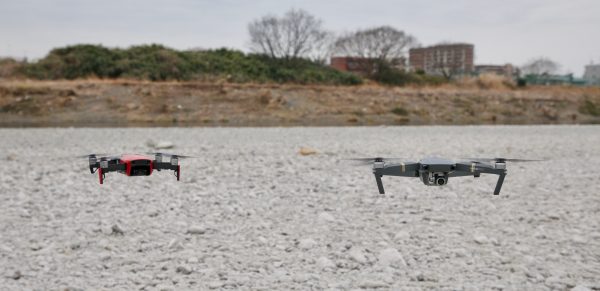
On paper, there are a lot of similarities between the Mavic Air and the Mavic Pro. The main key differences are:
- Mavic Air can record at 100Mbps and the Mavic Pro can only do 60Mbps
- The Mavic Pro has a 27 minute flight time, while the Mavic Air can only stay in the air for 21 minutes.
- The Mavic Pro has a maximum image transmission range of 4.3 miles, the Mavic Air is limited to 2.5 miles.
- The Mavic Pro has a maximum flight distance (no wind) of 13km, while the Mavic Air is limited to 10km.
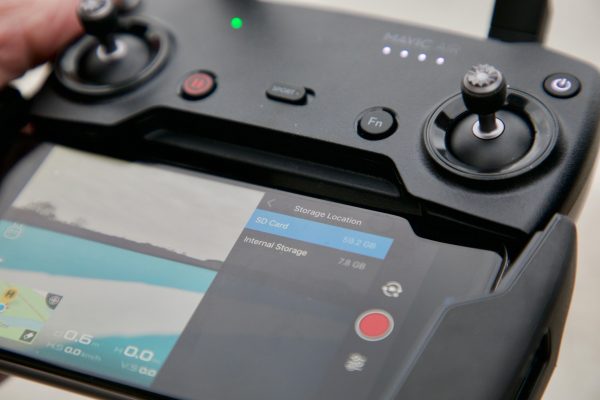
The Mavic Air has 8GB of internal storage available while the Mavic Pro doesn’t have any. I love the idea of having this additional internal storage. It’s so easy sometimes to forget to put the micro SD card back in the drone, so having this additional storage is a nice safety net. Once the SD card is full it starts recording to the internal memory automatically and verbally tells you, which is a nice touch.
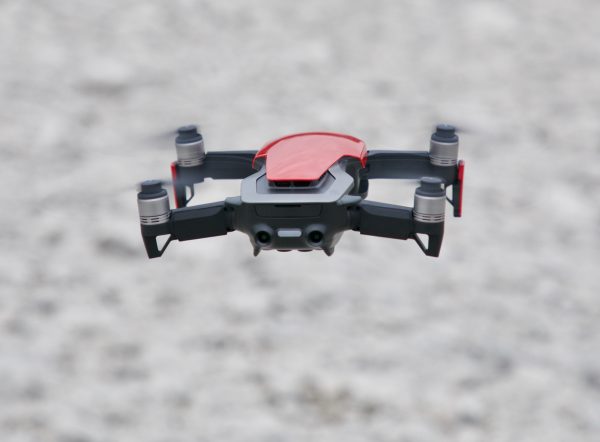
The Mavic Air also has rear obstacle avoidance sensors while the Mavic Pro doesn’t. The Mavic Air also has a new feature called Advanced Pilot Assistance Systems (APAS), which allows your drone to automatically fly over or around obstacles while keeping the flying direction the same.
The Mavic Air has a large sensor at the front, which allows it to be flown with hand gestures using DJI’s advanced SmartCapture technology. SmartCapture lets you launch the drone from the ground or off the palm of your hand by using a hand gesture.
The Mavic Air has all the same intelligent flight modes as the Pro but with the addition of two new QuickShot modes, Asteroid and Boomerang.
Asteroid makes the Air fly backwards and upwards. By capturing video, and then a Sphere panorama at the end of the flight path, it blends the footage and panorama into a short video. When played back the footage is reversed. While this does create a pretty cool effect, it is a little bit of a gimmick and users may find they get bored of it very quickly.
Boomerang as the name suggests, sends the drone on a path like how a boomerang flies. The drone starts in front of you and then flies around you on an upwards slope before finishing back in front of you.
While all of these intelligent flight modes are great you really do need to be very careful where you are using them. A lot of them can only be safely used in big wide open spaces.
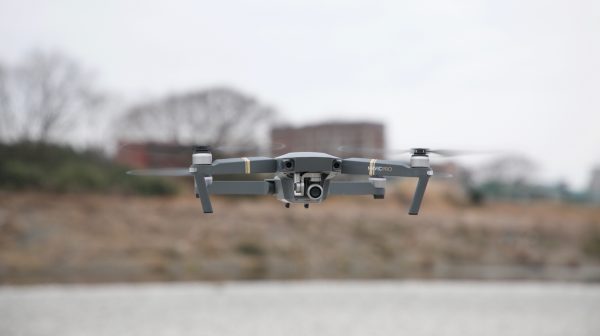
As you can see, both drones sort of cancel each other out when it comes to features, but if you need an aerial platform that can fly further and longer than the Mavic Pro wins that battle.
Field of view, focus and f-stop
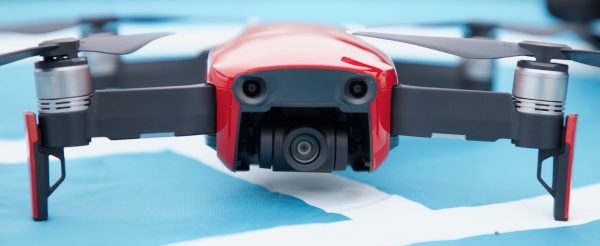
The Mavic Pro has a slightly wider field of view when compared to the Mavic Air, but I didn’t find this to be a hindrance. The Mavic Pro lets you choose your focus point by touching on the screen while the Mavic Air has a fixed focus that you cannot adjust. Again I didn’t find this to be a deal breaker. Often on the Mavic Pro, you find yourself forgetting to touch the screen to re-focus. Considering that the majority of shots most users will be doing will be done at height, the focus is likely to be at infinity anyway. The Mavic Pro has a slightly faster f-stop on its camera, F2.2 compared to F2.8 on the Mavic Air. While this is only 3/4 of a stop, it always helps to be that little bit more light sensitive, considering you can’t really use either drone above 400/800 ISO without introducing very bad noise. I do, however, wish that DJI would allow you to control the f-stop of the camera on both drones. This would really help a lot, especially in bright, sunny conditions.
Size difference
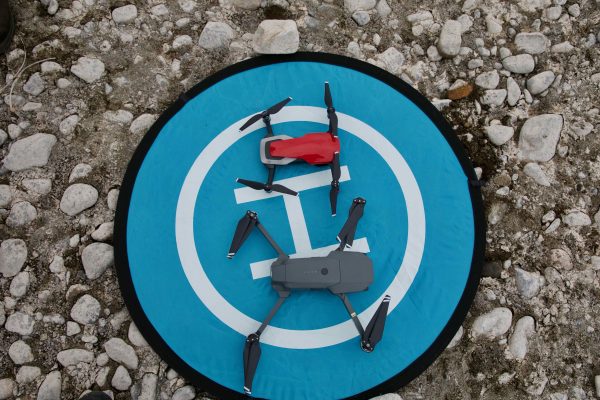
The Mavic Air certainly does look a lot smaller than the Mavic Pro when they are both unfolded and ready for flight.
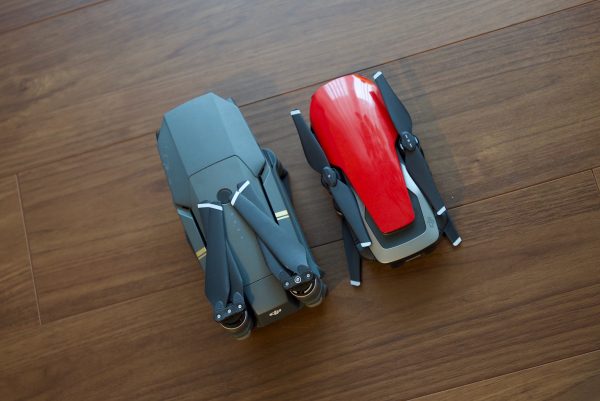
Once they are folded up, the size difference becomes less noticeable. The Mavic Air weighs in at 430g which makes it considerably lighter than the Mavic Pro at 734g.
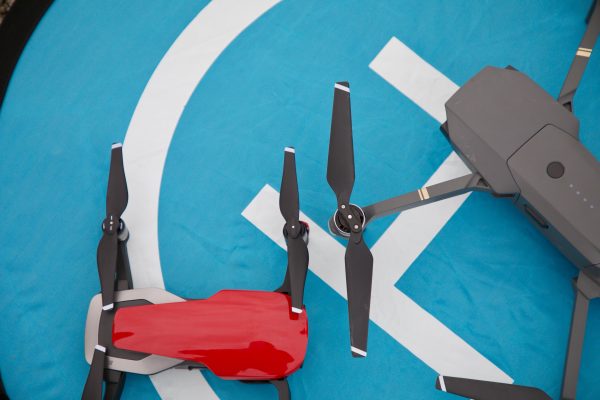
The Mavic Pro’s propellors fold together and are a lot larger than those of the Mavic Air.
Design
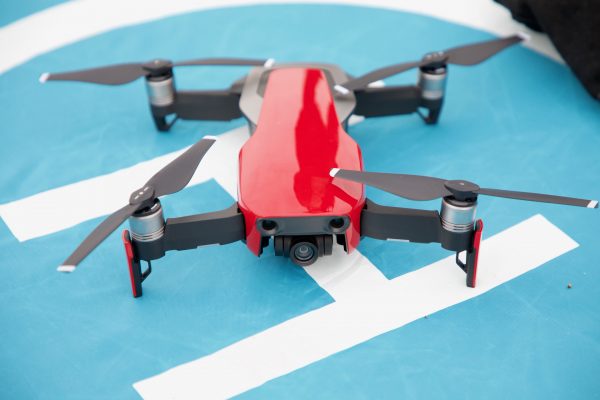
The Mavic Air looks like a love child between the Spark and the Mavic Pro. The edges are a little bit more rounded and smoother than the Mavic Pro and the Mavic Air also has vents in the Air shell to prevent it from overheating.
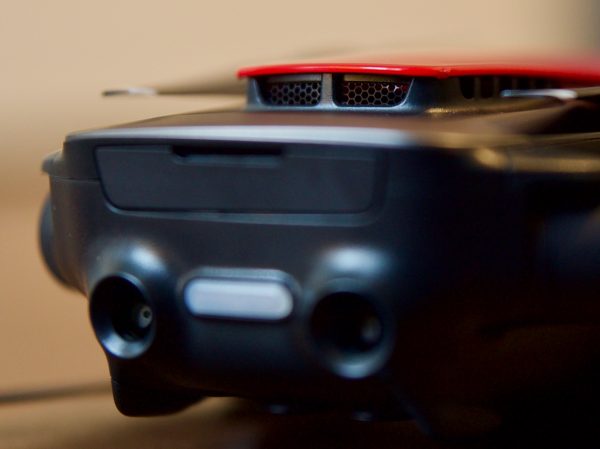
The air passes through the front of the drone and then gets expelled through vents at the back. The possible problem with this vent system is that insects or other small objects could get lodged inside the drone as there isn’t a screen behind the gimbal to prevent anything other than air from entering. The design certainly seems to keep the Mavic Air cool. If you turn the Mavic Pro on and just leave it sitting there for a while it gets very noisy, and also hot, while in comparison the Mavic Air remains quiet and cool.
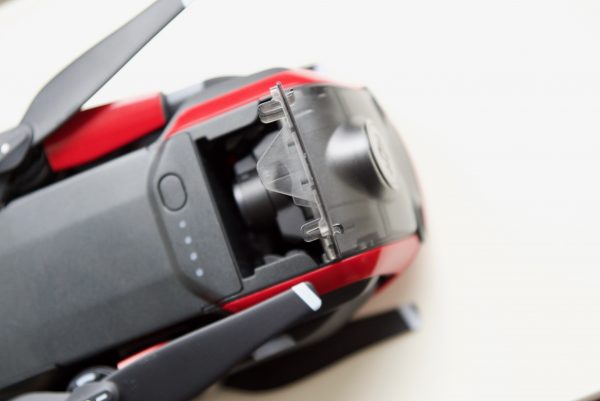
The Mavic Air’s gimbal is also more protected than the Mavic Pro’s and the cover that protects the gimbal when it’s not in use is also a lot better. The gimbal cover on my Mavic Pro broke a long time ago.
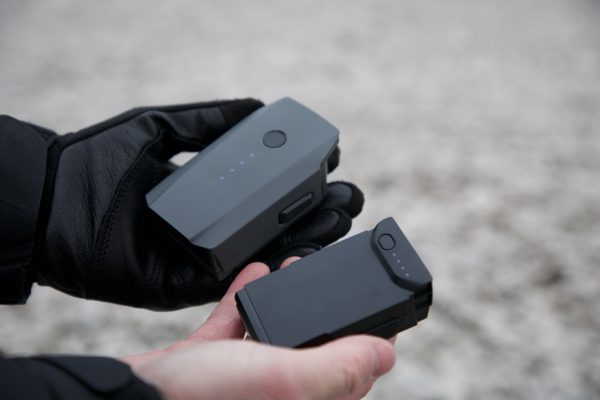
The Mavic Air uses a smaller 2375 mAh battery, while the Mavic Pro has a larger 3830 mAh battery.
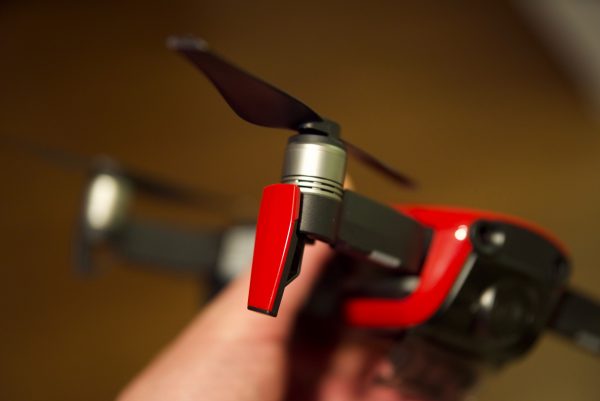
One thing you have to remember to do before you fly the Mavic Air is to fold down the little tabs on the bottom of the front arms. These are actually the antennas, and it’s important they are folded down before a flight.
Controllers
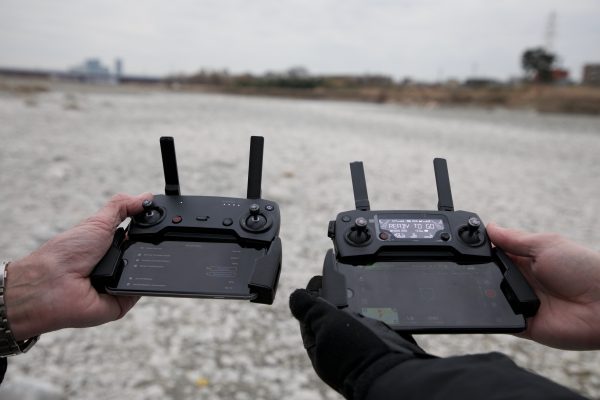
The Mavic Air and Mavic Pro controllers are very similar in terms of size. The big difference between the two is that the Mavic Pro has a telemetry screen while Mavic Air doesn’t.
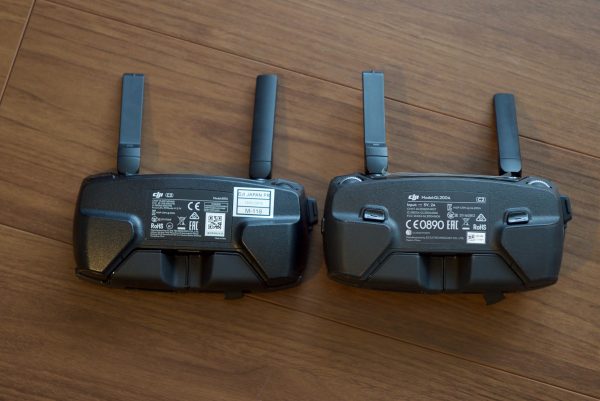
The Mavic Pro controller also has two dials on the top while the Mavic Air only has one. The Mavic Pro has two function buttons on the rear of the controller while the Mavic Air only has one function button on the front of the screen.
As well as being smaller in size, the control sticks for the Mavic Air also detach and get stored in the controller making it easier to store away and unlikely to get damaged in storage.
Image quality
This is perhaps the biggest question I wanted to try and answer. While I love my Mavic Pro, the low 60Mbps bitrate when shooting in UHD can rear its ugly head and sometimes ruin your footage. What I wanted to try and find out is does recording UHD at 100Mbps offer a perceivable difference when using the Mavic Air.
The Mavic Pro enables you to shoot in D-log, while the Mavic Air is limited to D-Cinelike.
Although the Mavic Air can record at a higher bitrate than the Mavic Pro, both drones to the best of my knowledge use different image sensors. The Mavic Pro apparently uses a Sony IMX377 and the Mavic Air uses a Sony Sony IMX477. The newer IMX477 1/2.3” type 1.55 um pixel cell 12.3MP CMOS image sensor that is apparently in the Mavic Air is capable of 60fps@12Mp 10bit, 60fps@4K2K 10bit, and 240fps@1080P 10bit. None of these capabilities are found in the Mavic Air, but this is likely to do with the limited onboard processing power.
Both drones are also said to be using different image processors. The Mavic Air apparently uses an Ambarella H1 image processor which is the same one that was in the Phantom 4. The Mavic Pro is said to use an Ambarella A9, which is the same image processor that was used in the GoPro HERO3.
When I asked DJI directly what image sensors and image processors were being used in the Mavic Pro and Mavic Air I was told: “We do not officially comment on those details.”
This newer image processor in the Mavic Air should make it better than the Mavic Pro in low light, but let’s see.
To try and create a level playing field we set both drones to the following settings:
UHD (3840×2160) 25p
Colour: D-Cinelike
Style: Standard +0 +0 +0
Manual exposure
ISO 100
Shutter 1/160th
White Balance: Auto
The Mavic Air does have a slightly slower f2.8 aperture, compared to the f2.2 of the Mavic Pro, so in theory, the image it produces at the same settings should be slightly darker (but not by much considering we are talking about 3/4 of a stop). Usually, I use ND filters on my Mavic Pro, to bring the shutter speed down, but I didn’t have any ND filters for the Mavic Air. Ideally, I would have preferred to have tested both drones at lower shutter speeds.
The footage from the video shows how the two images look when both drones were flown in the exact same conditions at the same time. It was quite clear even from my limited testing that the Mavic Air’s image resolves a lot more detail. The newer image processor, higher bitrate and newer sensor all contribute to an image that doesn’t look as mushy as that of the Mavic Pro. Cropping in 200% on an image really shows the difference in terms of detail and sharpness. Even with a stationary shot that’s not going to stress the codec too much, when I cropped in on Taro’s face you can see the lack of detail on the texture of his skin compared to the image at the same settings that are coming from the Mavic Air. I also found it interesting that even at the same settings, the Mavic Air’s image appeared to be just as bright as that of the Mavic Pro. What I did find is that even in the D-Cinelike setting, the Mavic Air image had considerably more colour information and contrast.
Look, you could make adjustments to both drones to get better results, but in a head-to-head evaluation you need to test them at the same settings. The Mavic Pro’s image can be made to look sharper, but I personally don’t like that overly hyper sharpened look. On most occasions I am intercutting drone footage with another camera and if the image is overly sharpened it doesn’t blend in well. It’s also important to note that just because something looks sharper, it doesn’t mean it’s necessarily resolving more detail in the image. Setting the Mavic Pro to +1 sharpening may make everything look sharper, but it’s introducing more image artefacts and noise into your images.
I still found both images were susceptible to that well documented “flickering” look, especially when used at higher shutter speed settings. Even the increase in bitrate doesn’t eliminate this effect from the Mavic Air. The reason you are getting this flicker is due to compression. The video flickering is caused by GOP compression artefacts. GOP stands for ‘Group of Pictures’ and is a common compression method. It groups multiple frames together to help get better compression rates. Typically this is 7 or 15 frames. In the case of the DJI Phantom drone, it uses a 7 frame GOP. This causes a shift in pixels every 8 frames. In some video footage, this is very noticeable as it is a rhythmic pattern and creates a shimmering type of effect. This is very noticeable in most of the DJI drone footage, especially those using low bitrate codecs.
100Mbps for recording a UHD image in H.264/MPEG-4 AVC is still far from ideal, especially if you are flying at speed over terrain such as trees, and water. The codec just can’t handle all that information.
From previous experience using the Mavic Pro, I have found that it can look really nice in bright sunny conditions, but not so good when it is overcast or flat light. The Mavic Air to my eye looked a lot better in overcast and flat light conditions than the Mavic Pro. I didn’t notice much difference in highlight roll off or overall DR between the two drones in real-world conditions.


The colours are both quite dramatically different between the two drones when they are used with the exact same settings. The Mavic Air has a warmer look to it that pushes slightly towards magenta, while the Mavic Pro looks cooler and leans more towards green. Above you can see that clearly on the vectorscope. To my eye, the Mavic Air’s colour is more closely matched to the Phantom 4 Pro than it is to the Mavic Pro. I did find even when shooting in D-Cinelike that the Mavic Air’s image was a little oversaturated for my liking.
My biggest complaint with most of the DJI drones is that the dynamic range, highlight roll off and low light performance hasn’t improved that much over the years. They still struggle with contrasty conditions and trying to retain any type of detail in bright highlights is virtually impossible. Every time I see a sunset shot with the sun going down I get reminded of just how bad that is.
Low light
I would have thought that the Mavic Air would outperform the Mavic Pro when it came to low light performance, but I didn’t find that to be the case. I set up a simple test where I used the exact same light and just changed the brightness so that the EV value would read 0 on both the Mavic Pro and the Mavic Air. This test isn’t stressing the codec as everything is stationary. This test is purely designed to just show noise. Both drones were set to the following parameters:
UHD (3840×2160) 25p
Colour: D-Cinelike
Style: Standard +0 +0 +0
Manual exposure
ISO 100
Shutter 1/50th
White Balance: 5600K
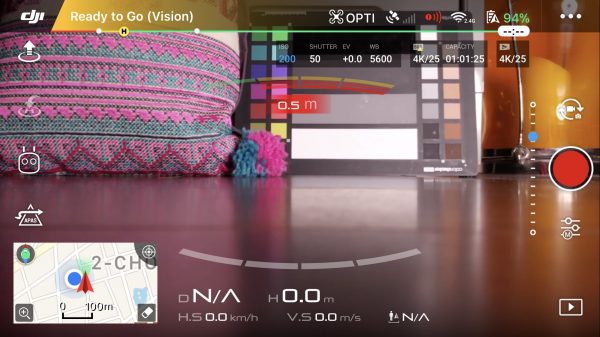
At 100 and 200 ISO, I found very little difference, but the Mavic Pro to my eye seemed less noisy at 400 ISO and above. In saying that I would be hesitant to use either drone at ISO values above 400. What I also found was the Mavic Air had this strange bug where at ISO values of 200 and above there was the weird exposure change of the image halfway through a shot. Whether this is something that can be fixed through a firmware update I’m not sure.
Flying Differences
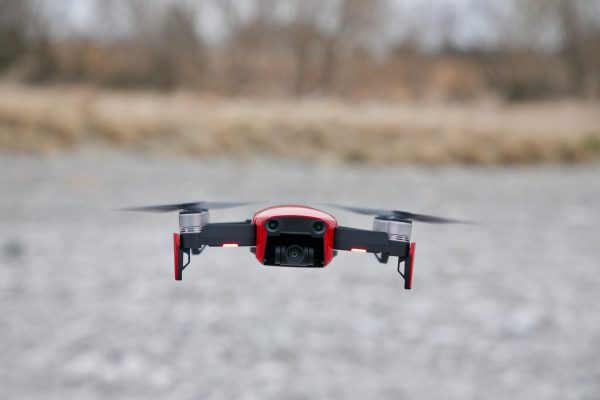
In normal operating conditions it was hard to distinguish a lot of difference between the Mavic Air and Mavic Pro. Both drones fly smoothly and hover well. I couldn’t perceive a lot of real-world difference between flying the two but the difference may be more noticeable in higher winds. In the limited time I had to test the Mavic Air I wasn’t able to fly it in windy conditions. I’m sure the Mavic Air’s transmission range may result in the signal being dropped from the controller, but I rarely fly my drone at distances that are further than I can see.

Where the difference was quite noticeable was when it came to the flight time. We launched the Mavic Pro and the Mavic Air at the same time and the extra six minutes of flight time with the Mavic Pro became very apparent when we had to bring the Mavic Air back. Six minutes when you are shooting aerials feels like a lifetime. If you had, for example, four batteries for both the Mavic Air and the Mavic Pro, the extended flight time you get with the Mavic Pro equates to one extra flight.
There is also a considerable difference in the noise of both drones. The Mavic Pro is quieter than the Mavic Air.
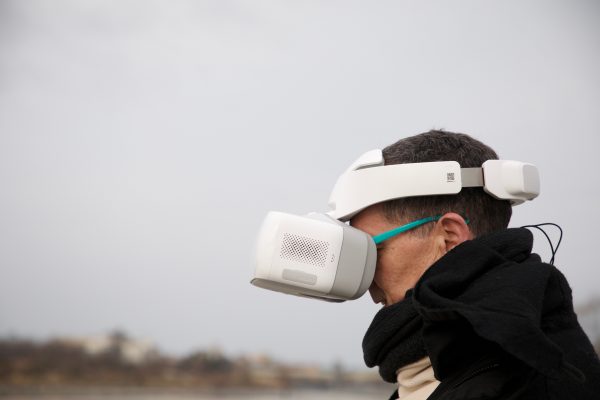
We also tried using the DJI goggles to operate both the drones, but we had very mixed results. Controlling the camera gimbal while wearing the goggles really can’t be done that smoothly and we found that we actually got better results by just holding the goggles and moving them slowly. Wearing them and moving your head didn’t create smooth camera moves at all.
Can you use them as an alternative to a handheld gimbal?
The simple answer is yes. But in saying that it’s certainly not a replacement, but more of an alternative if you have to get a shot and all you have with you is a drone.
I did a short test to see how both of the drones looked if you tried to use them as a handheld gimbal. Both of them did a pretty adequate job as long as you don’t try and do anything too fancy. The Mavic Air was a lot more useful if you were running with it. The Mavic Pro certainly had major issues if you tried to do the same thing.
I think in a pinch you could get some half decent tracking shots from inside a vehicle or use it in situations where you could mount it up on a light stand for a high shot. The benefit of using a drone for this type of shot is you can tilt the camera up and down and also make changes all while seeing exactly what you are doing.
So is the Mavic Air better than the Mavic Pro?
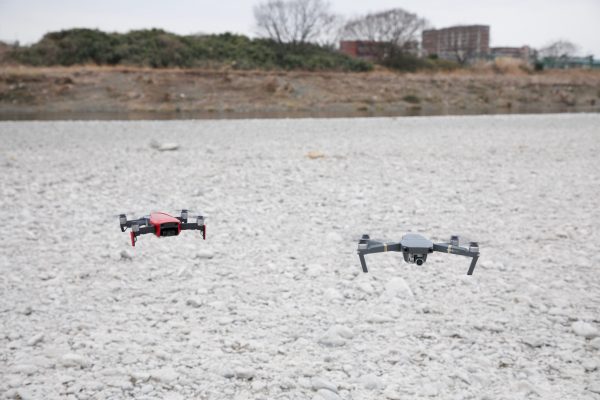
As the saying goes, “Different strokes for different folks”. It really comes down to what you need and wants out of a drone. From my findings, I think it’s a case that the Mavic Air punches above its weight mainly because of the superior bitrate, sensor and image processor when compared to the Mavic Pro. Overall I think the Mavic Pro is still a better product, but the Mavic Air is nipping at its heels.
The image quality is better from the Mavic Air, but its shorter flight time and range, coupled with the lack of D-Log means I won’t be running out to buy one. I think if you own a Mavic Pro I would be holding out for the replacement for that drone. It’s truly amazing to think just how far drone technology has come in only a handful of years. In a few years, we will be looking back and laughing at how bad the drones we are currently using were.





